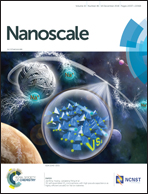Role of the Cu substrate in the growth of ultra-flat crack-free highly-crystalline single-layer graphene†
Abstract
Producing ultra-flat crack-free single-layer high-quality graphene over large areas has remained the key challenge to fully exploit graphene's potential into next-generation technological applications. In this regard, we show that epitaxial Cu(111) film represents the most promising catalyst for the chemical vapor deposition (CVD) of graphene with superior planarity and physical integrity. We first compare the most widely used Cu catalysts (foils, polycrystalline films and epitaxial films) in order to benchmark the roughness of the Cu surface which serves as a template for graphene growth. We then discuss the correlation between the formation of cracks and wrinkles in as-grown graphene and the surface morphology of these various Cu catalysts. In particular, Cu grain boundary grooves, inherently present in polycrystalline substrates, are found to contribute to the formation of cracks. Finally, we focused on tuning the CVD protocol in order to successfully grow highly crystalline graphene made of millimeter-size domains on every type of catalyst while mitigating Cu surface roughening. Putting into context the challenges and opportunities associated with the most widely used Cu catalysts provides valuable guidelines for high-throughput manufacturing of graphene suitable for emerging industrial applications.



 Please wait while we load your content...
Please wait while we load your content...